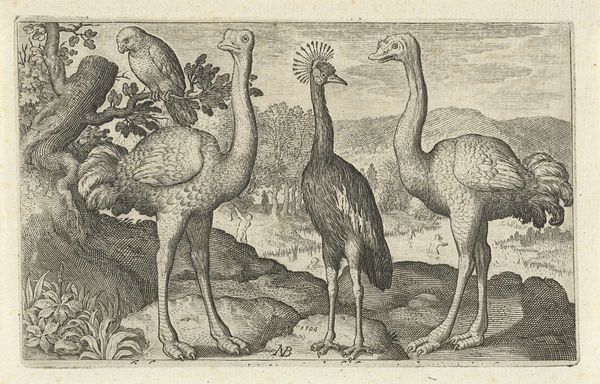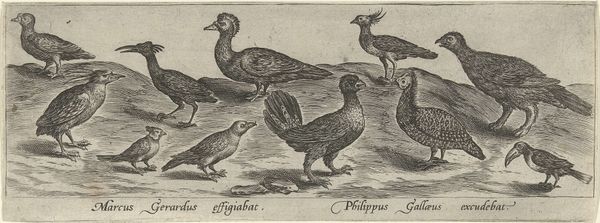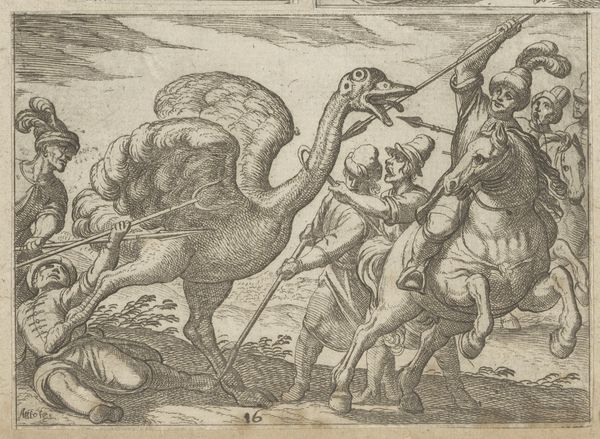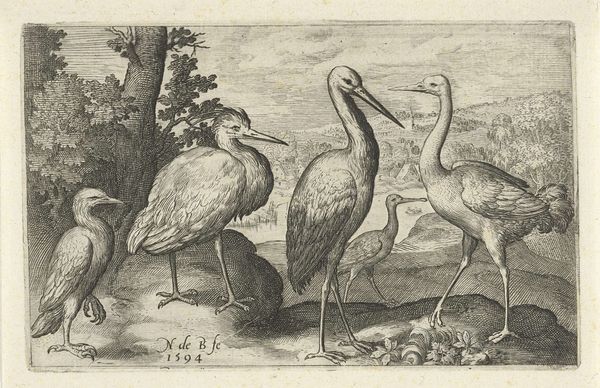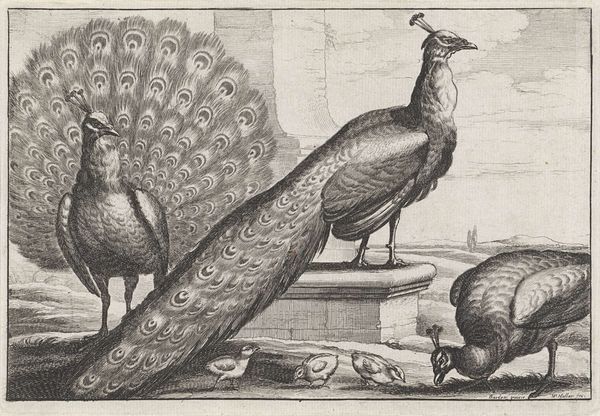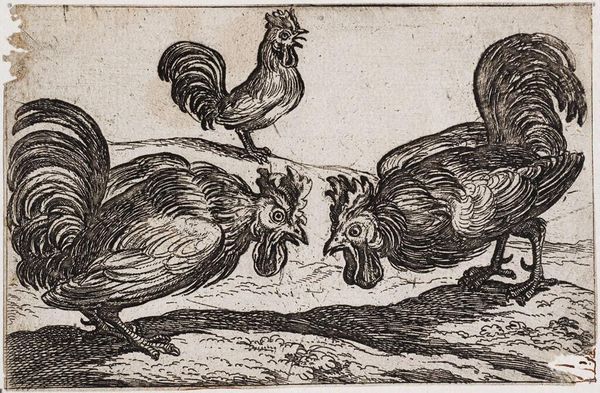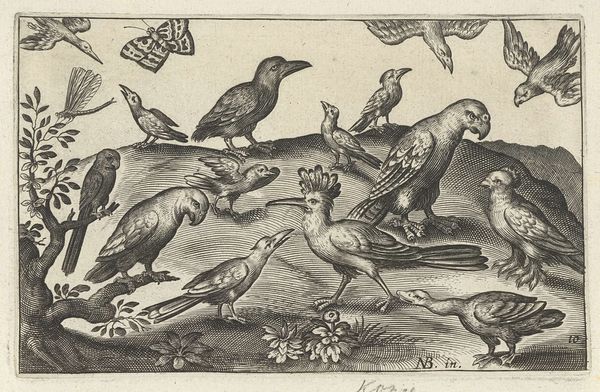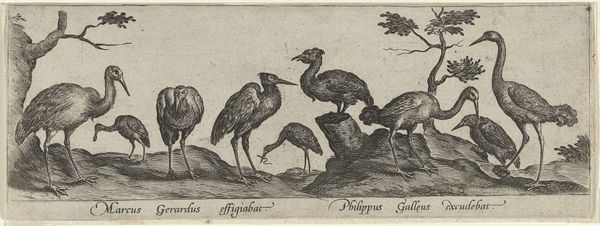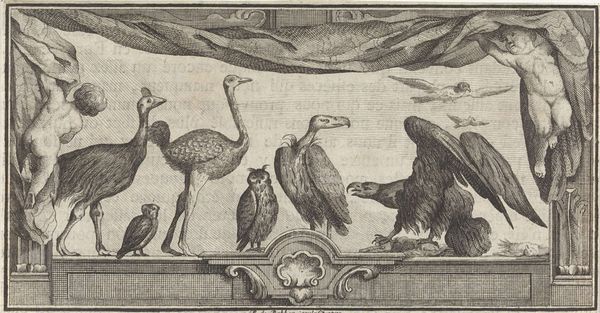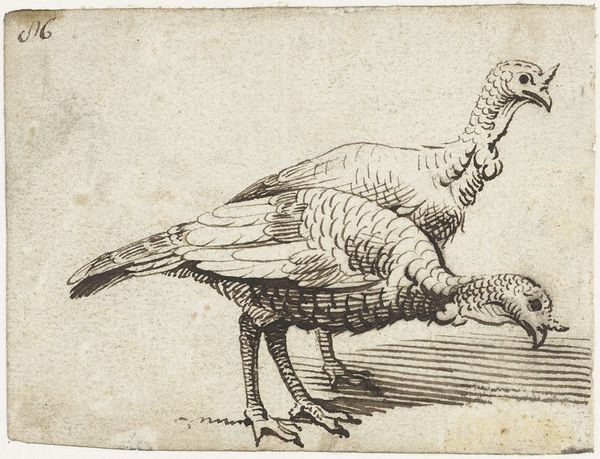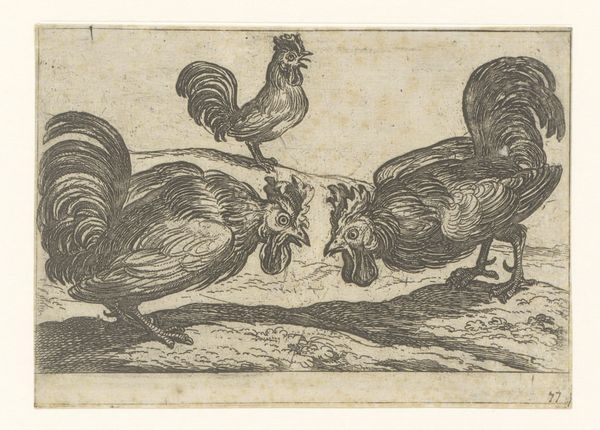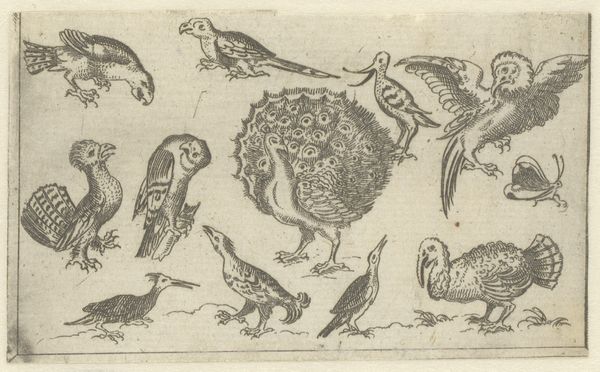
print, etching, engraving
#
animal
# print
#
etching
#
old engraving style
#
11_renaissance
#
italian-renaissance
#
engraving
Dimensions: height 95 mm, width 137 mm
Copyright: Rijks Museum: Open Domain
Editor: Here we have Antonio Tempesta's "Misvormde Ganzen," or "Deformed Geese," an etching from before 1650. It's odd... almost unsettling. One goose has two necks, while the other seems relatively normal. What do you see in this piece? Curator: This print, presented almost as a scientific illustration, demands we unpack its historical and cultural context. It was made during a time of intense fascination with the natural world, but also one riddled with superstition and belief in the monstrous. How does the idea of "deformity" reflect societal anxieties about control, particularly in relation to reproduction and natural order? Editor: So, the print isn't just about weird geese? Curator: Not at all. Think about the role of animals in Renaissance art and thought. Often, they were symbolic stand-ins for human traits, virtues, or vices. In this context, "deformity" might symbolize societal fears of deviation from the norm or anxieties about miscegenation and cultural purity. How might we read the conjoined goose through a contemporary lens of queer or trans identity, challenging normative understandings of the body? Editor: That's a fascinating point, framing it outside traditional art history. But why engrave and distribute it as a "scientific record"? Curator: Exactly! Consider how this image participates in constructing ideas about what is "natural" versus "unnatural," and who gets to define those categories. It’s an act of classification and, perhaps, an unconscious expression of dominance over the animal kingdom but maybe also the culturally 'Other'. By understanding the intersection of art, science, and societal norms, we can critically examine the power dynamics embedded within this seemingly simple print. Editor: I hadn't considered that! Now I see it's not just a historical record but a window into Renaissance anxieties and power structures. Curator: Precisely. This engraving invites us to rethink historical narratives. Looking at historical narratives in a way that resonates with today's concerns is what helps the artwork live on.
Comments
No comments
Be the first to comment and join the conversation on the ultimate creative platform.
